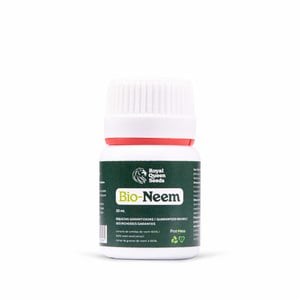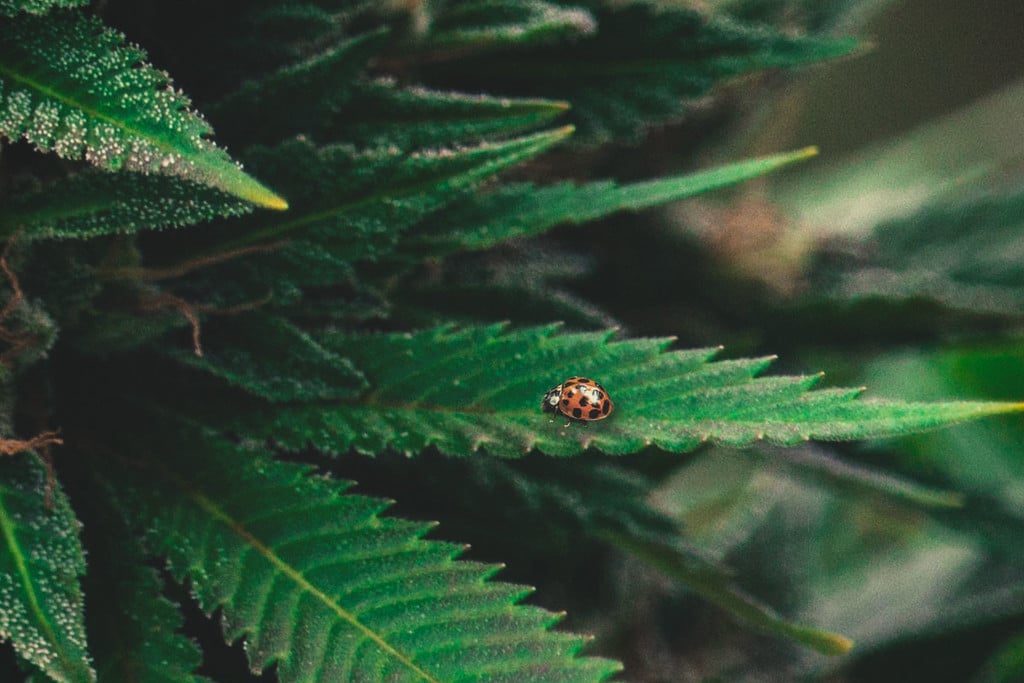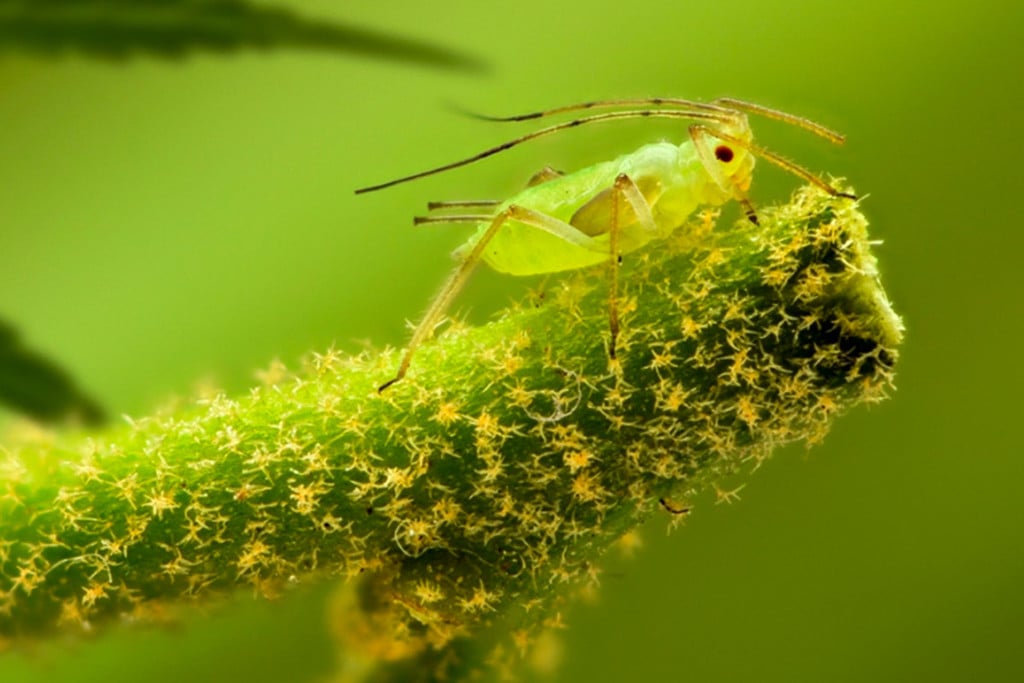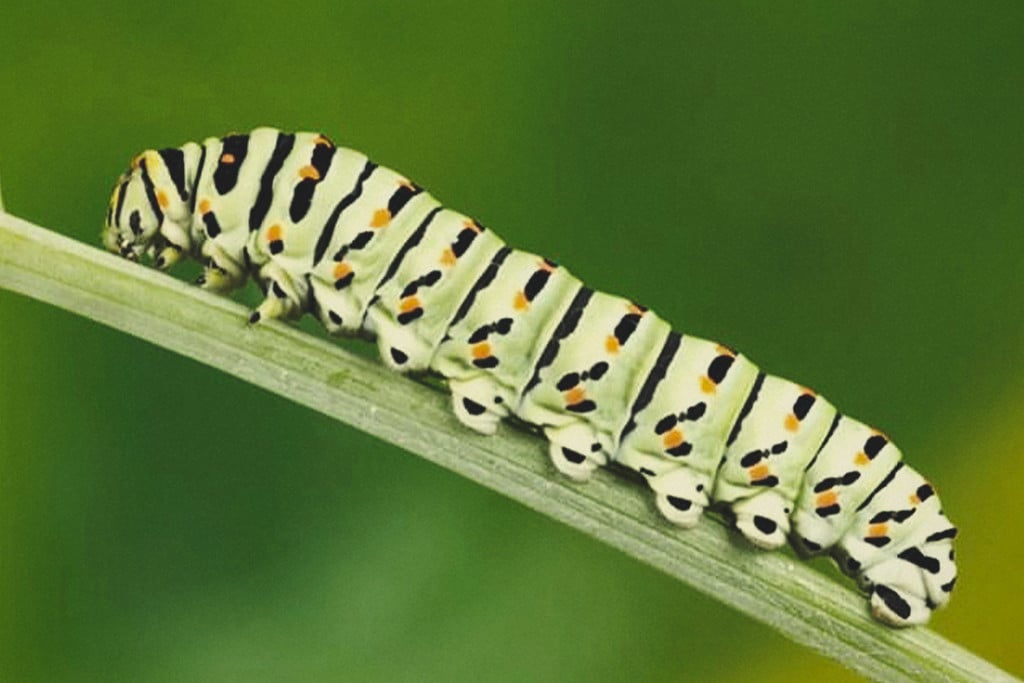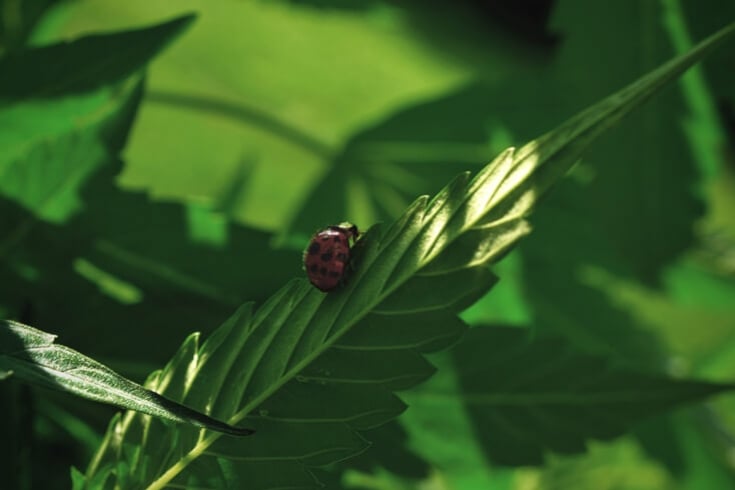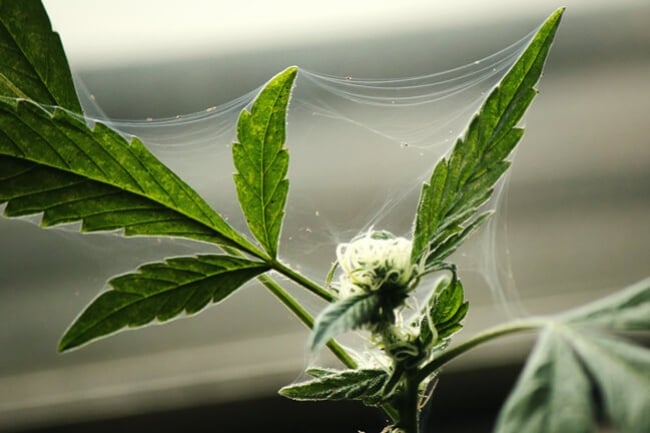.
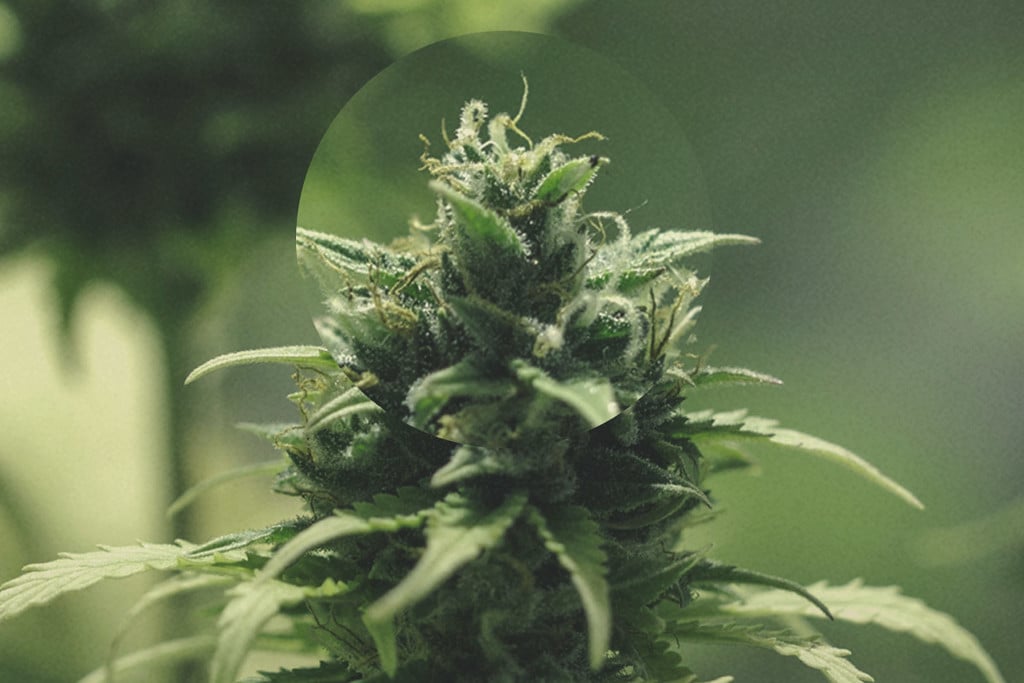
How To Stop Fungus Gnats From Damaging Your Weed Plants
Every grower desires optimal yields of massive buds from their marijuana plants. Fungus gnats are a factor that can damage this outcome. However there are numerous ways to protect your weed from this pest.
Contents:
- What are fungus gnats?
- Where do fungus gnats come from?
- What do fungus gnats do to cannabis plants?
- How to spot a fungus gnat infestation
- How to eliminate fungus gnats from cannabis plants
- How to prevent fungus gnats
- How to deter large insects
- Shield your weed from small insects
- Keep your crop safe from hungry animals
Nothing can be worse than investing time, effort, and money into getting a cannabis grow going only to encounter uninvited guests that devour your precious plants. Along with mites and other critters, one common cannabis pest is the fungus gnat. Learn how to spot, prevent, and eliminate fungus gnats on sight using the guide below!
What are fungus gnats?
Fungus gnats are tiny, dark, short-lived gnats that look like small flies. If you have an infestation, you will see them jumping around on the soil. Unlike some other cannabis pests, fungus gnats don’t have much of an interest in the leaves or flowers of your weed as they live in the soil. Instead, larvae gnaw on the roots and damage them. Since the root system is critical for healthy growth, a fungus gnat infection can be a problem.
Fortunately, fungus gnats are not the worst pests you can encounter. If you have mature plants with a strong root system, fungus gnats may be more of a nuisance than a catastrophe. On the other hand, they pose a serious threat to young plants and seedlings. A massive infestation left unattended can also be a problem for bigger plants.
Where do fungus gnats come from?
Fungus gnats are almost always an indication of moist conditions in your grow room, and usually occur when cannabis plants are being overwatered.
-
Life cycle
Fungus gnats develop in four stages: egg, larva, pupa, and adult. In favourable warm and wet conditions, adult females deposit hundreds of eggs in the soil. Larvae feed for about two weeks and then pupate near the soil surface. After 3–7 days in the pupal stage, adult gnats emerge and live for about eight days. It takes about 3–4 weeks for adult gnats to develop from eggs.
As fungal spores are around us everywhere pretty much all the time, all gnats need are wet conditions and organic matter to appear. Many times, their eggs are already included in unsterilised shop-bought soil.
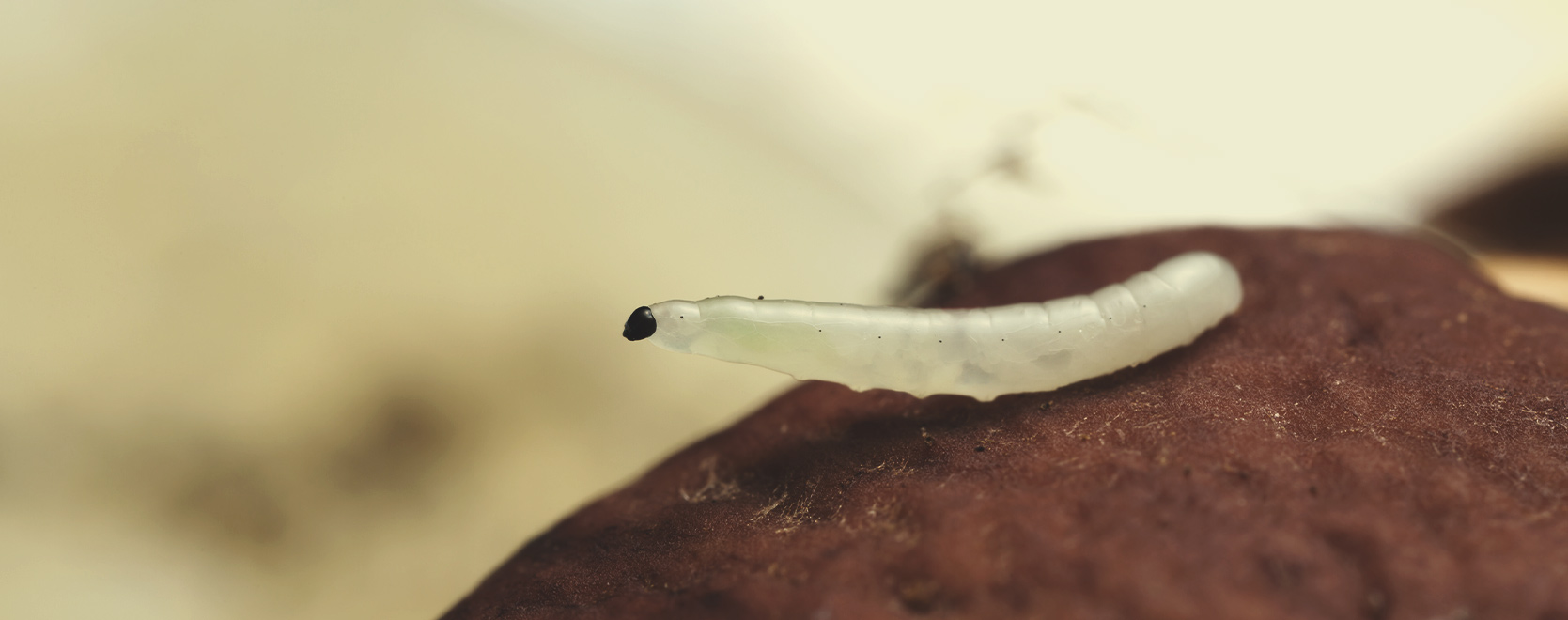
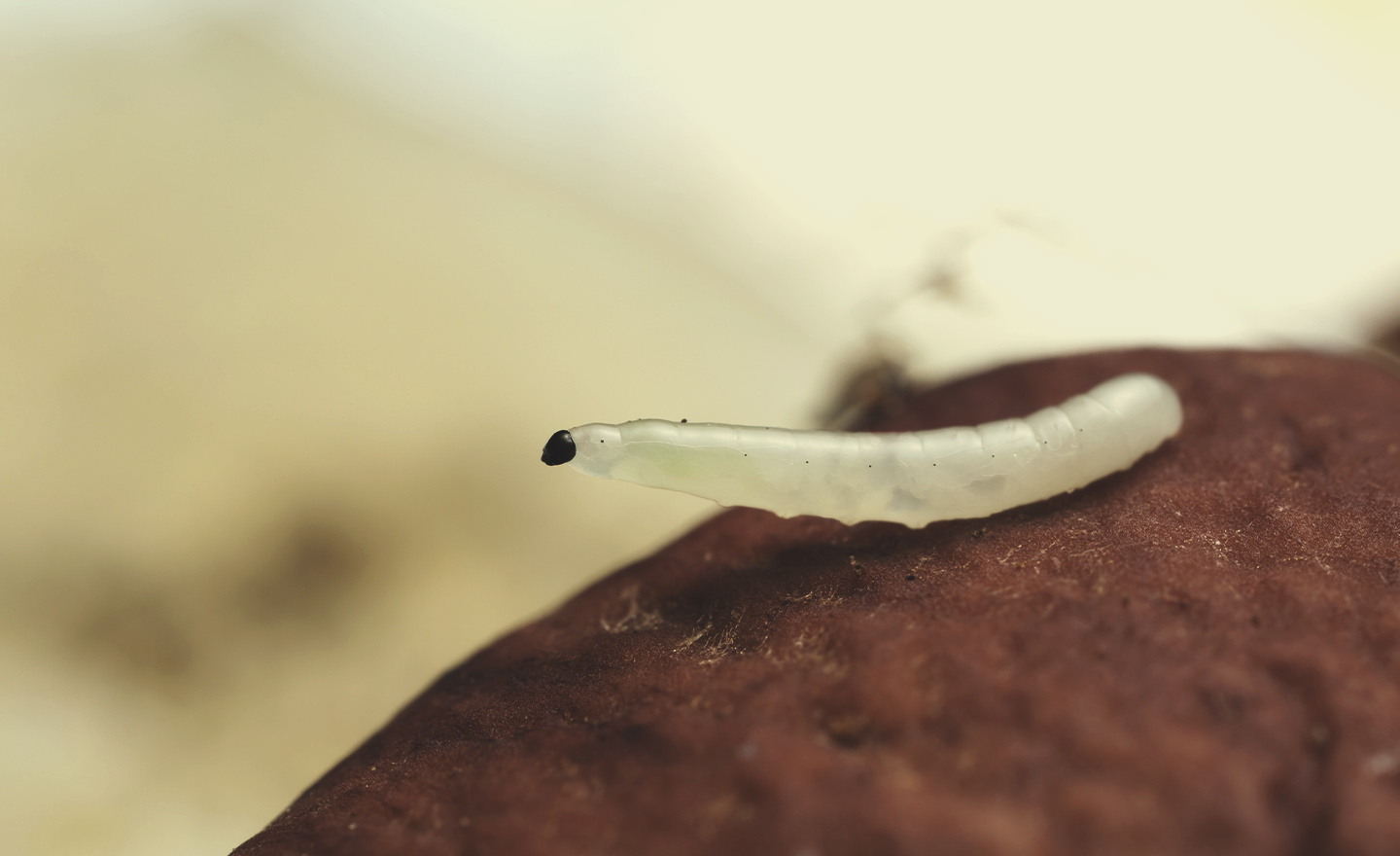
What do fungus gnats do to cannabis plants?
Fungus gnats don’t consider the roots of your cannabis as their favourite food. They’d rather devour fungus and decaying matter in the soil. But, they do become a problem when organic matter in the soil is depleted. In that case, fungus gnat larvae devour and damage root hairs and the tender cannabis roots themselves.
Symptoms of fungus gnat infestation:
- When roots are damaged, plants can show various signs of disease including yellow leaves, wilting, spotting, and drooping.
- Symptoms of nutrient deficiencies can occur (sickly growth, leaf discolouration, etc.) despite correct pH and proper nutrients.
- Seedlings weaken, autumn over, and die (“damping off”).
- Stunted growth and low yields.
How to spot a fungus gnat infestation
A fungus gnat infestation is relatively easy to diagnose. Fungus gnats are small, but you can see them if you get close to your plants. Here’s how to spot them:
- Tiny “flies” crawling and jumping on the soil around your plants.
- White maggots wiggling in the soil. Not as easy to spot as they are very tiny and may be hidden in the soil.
- Otherwise unexplainable plant issues including, but not limited to, pale leaves, spots, brown edges on leaves, and drooping plants. Signs can vary and may appear as other plant issues and diseases.
How to eliminate fungus gnats from cannabis plants
In a certain sense, fungus gnats can be a good thing, as they alert you to issues with your watering regimen. When they appear, it’s almost always because your plants are being overwatered. Fortunately, getting rid of them is relatively easy:
-
Water less frequently
The first, and most important, thing you should do is rethink your watering routine. Allow the soil to dry out fully between waterings—it will be fine. Most of the time, if you do that, the fungus gnat problem will go away on its own.
-
Yellow sticky traps
Get yellow sticky traps from the garden shop and position them around your plants. These traps attract the fungus gnats, which will stick to them. Know that yellow traps alone will not entirely eradicate an infestation. But, they are a good indicator of whether you (still) have fungus gnats and can prevent many of them from harassing your soil.
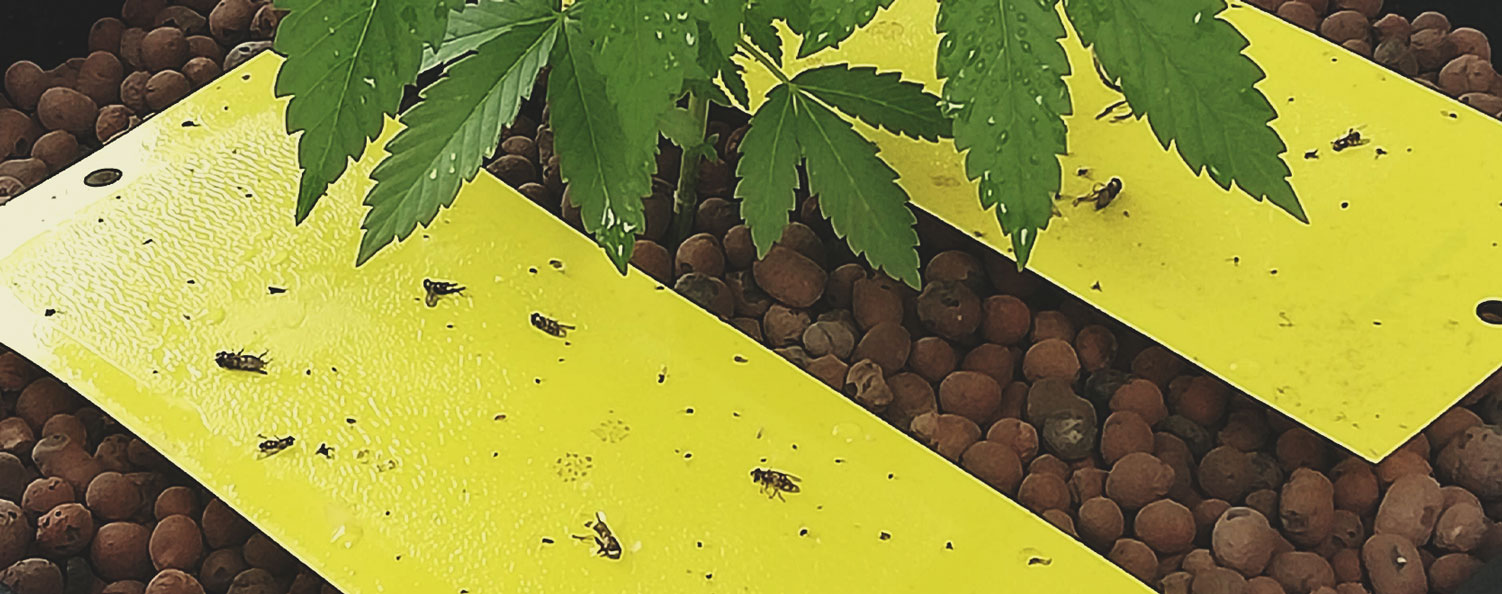
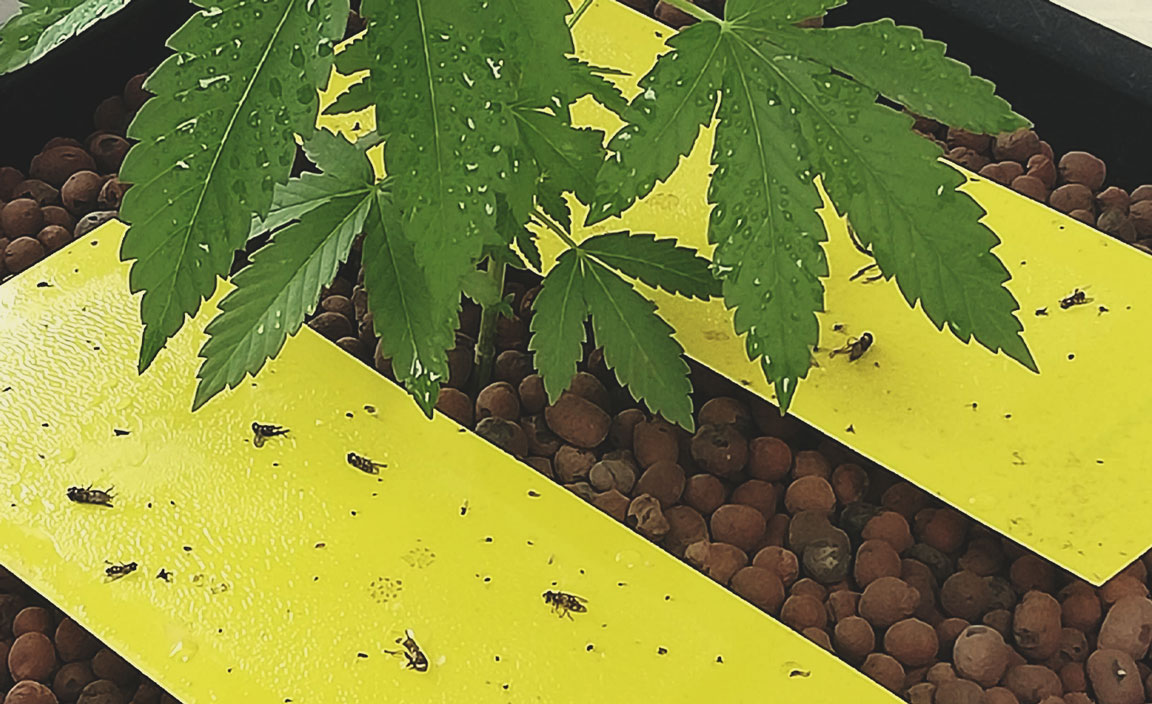
-
Neem oil
If you have a pest infestation, you don’t need to get all hardcore with chemical insecticides. Neem oil can help get your infestation under control. It’s also good as a preventative measure. Treat the top layer of your soil with it to eliminate the larvae.
-
Diatomaceous earth
Diatomaceous earth is another way to get rid of bugs naturally. Sprinkle the fine powder on the soil around your plants. This should take care of the nasties in no time.
-
Blow air over the soil
A simple standing fan gently blowing air across your soil has lots of advantages. Making life miserable for bugs is one of them. It will also help dry out the soil quicker to eliminate the gnats for good.
-
BT bacteria
Some growers know the Bacillus thuringiensis bacteria for getting rid of caterpillars. There is a variety of these bacteria, Bacillus thuringiensis israelensis, that works for fungus gnats. Just add water.
How to prevent fungus gnats
Prevention is always better than treatment—here’s what you can do to keep those nasties away.
-
Water less frequently!
More than anything else, pay attention to the amount of water you give to your plants! Wet, warm conditions are practically begging for fungus gnats. Allow the soil to dry out. If you are not sure when to water, you can do the “lifting test”. Simply lift up your plant with its pot and compare the weight when fully watered versus dry. Water only if the pot feels noticeably lighter.
-
Cover the soil
Since fungus gnats live and breed in soil, you can cover it with sand, gravel, or perlite to prevent them from getting cosy. Keep in mind, however, that while covering the soil may prevent the gnats from appearing, your plants may still be water-logged.
-
Sterilise your soil
Sometimes, you simply can’t prevent bugs from appearing, for instance if they were already present in the soil. To be on the safe side, sterilise your soil first. Do this by putting some soil in a flat, oven-safe container like a baking pan and cover with foil. Place a meat thermometer into the centre and “bake” for at least 30 mins at 82–93°C. While you’re at it, ensure your pots and growing area are clean as well. This way, you can minimise the risk for all manner of diseases, fungi, and pest infestations.
-
Consider alternative growing media
If you find your cannabis plants are frequently "bugged", consider growing in an alternative medium. When you grow weed in coco, perlite, or hydroponically, pest infestations are less likely.


























